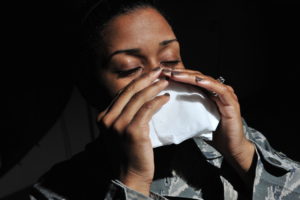Dust mites! The little mite with a big appetite!
Horrible beasties, creepy critters, pukey pests, sick bugs. Whatever you call them – dust mites, bed mites, house mites – these microscopic monsters can make us sick! But what do these little louts look like? What do they eat? And what do they do? Does it really matter? If they’re so tiny, how much harm could they possibly do? Ok, let’s start with the first question.
Ever seen a dust mite way up close? ‘Course not’, you might say, unless you’re a dust mite at a dust mite convention, or a scientist in a lab, or a bug biologist, or you look at the world through a microscope. Bed mites are only about one-fifth of a centimetre long. But don’t be fooled by their dimensions. These bite-sized creatures get around. In fact, they feed on skin and even mould!
These miniscule mites look like a cross between tiny alien crabs and weird looking spiders with hairy prods and sticking-out bits. They’ve actually got eight legs, with suckers and hooks, and they poo on average 20 times per day! In fact, in a 10-week life span, a house dust mite will produce approximately 2,000 faecal particles and an even larger number of partially digested enzyme-covered dust particles.1
Where do dust mites and their poo go?
Never thought you’d hear that question? Well, fair enough. There’re better things to do than think about dust mite poo! But, the answer may surprise you.
As you can imagine, dust mites or bed mites, as they’re also known (bed bugs are different), love to live in beds!!! And up your nose, on your skin, and in your eyes. Why? Because dust mites thrive in warm, humid environments.
Dust mites get stirred up, even by ordinary movement. Like vacuuming, or kids playing, changing the bedclothes, or just turning in your sleep. Their bits and poo can fly around in the air, caught up in dust that you can’t even see. Your house and bed don’t have to be dusty for dust mites to be there. Remember, this is a microscopic world.
 What effects do dust mites have?
What effects do dust mites have?
Now this is where it can get serious. Mites are one of the major indoor triggers for people with allergies and asthma. And dust mites can even cause asthma.
Ongoing exposure can have a dramatic effect on people prone to allergies, ranging from mild to severe. These can include a runny nose, watery eyes, sneezing, coughing, congestion, facial pressure or a severe asthma attack.2
What to do? One of the best things you can do is make sure your bed is dry and clean, especially if you or your family suffers from allergies. A waterproof bed and bedclothes are a great start, to keep your bed dry. BedGuard’s beds and accessories are ideal for this, as their treatment process is designed to prevent the ill effects of dust mites, among other nasty things. To find out more, have a look here.
1. https://en.wikipedia.org/wiki/House_dust_mite
2. http://www.lung.org/our-initiatives/healthy-air/indoor/indoor-air-pollutants/dust-mites.html





